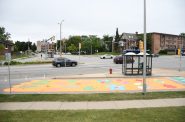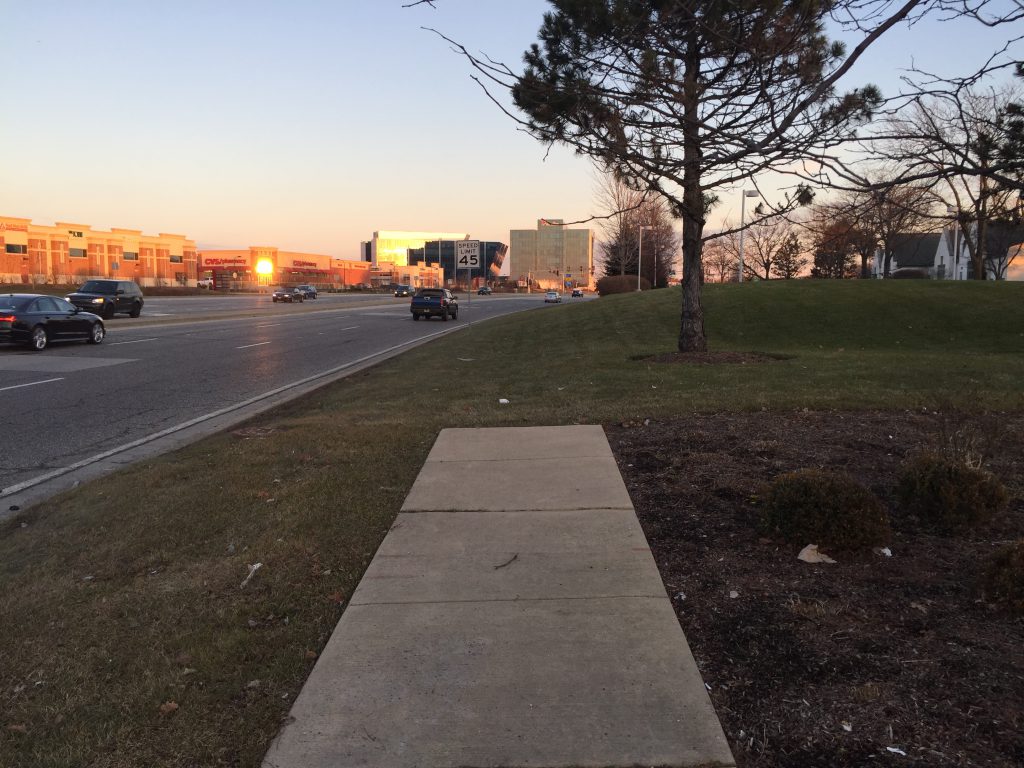How Researchers are Mapping Sidewalks in Cities
All the city news you can use.
Every day at The Overhead Wire we sort through over 1,500 news items about cities and share the best ones with our email list. At the end of the week, we take some of the most popular stories and share them with Urban Milwaukee readers. They are national (or international) links, sometimes entertaining and sometimes absurd, but hopefully useful.
LA transit overwhelmed by drugs, homelessness: In Los Angeles the transit system is suffering from low ridership and many are staying away in part because of worries about going into subway cars with people sleeping and using drugs like fentanyl. This obviously isn’t a new phenomenon but with less people overall on trains and buses the visibility of problems is more pronounced. Officials want to make trains more inviting, but are worried about the impacts of bringing more law enforcement to deal with social issues. (Rachel Uranga | Los Angeles Times)
Red states preemption of blue cities increasing: States with more Republican elected officials are clashing with cities that elect Democrats and support their policies. States across the country are seeking to limit policies such as rent stabilization, minimum wage, and school curriculum. Many of the topics are tuned to politics and culture war issues but could also have a corrosive effect on democracy if people with more local issues feel their voices can’t be heard by legislators at higher levels of government. (Monica Potts | FiveThirtyEight)
Mapping more sidewalks in cities: Researchers from multiple universities have created an open source tool that maps sidewalks in cities using aerial photos and recognition software. Most cities don’t have comprehensive data on sidewalks, so this could be a welcome addition for planners and city officials seeking to repair or bolster sidewalks or focus their efforts on active transportation in climate change efforts. (Peter Dizikes | MIT News)
Dead electric car batteries second lives powering cities: Once electric car batteries outlive their useful life in electric cars, they are still useful in other ways and can keep about 80% of their charge. This allows them to be used for other applications such as solar storage or powering street lights and elevators. As more and more electric cars are manufactured, there’s a need to figure what happens to their batteries after their usefulness to cars is up. (Peter Yeung | Reasons to be Cheerful)
Quote of the Week
We’re really good at responding and arresting somebody for drugs or assaults or thefts or burglaries, but of course they get out of jail and recidivism happens. We think that through this process [of neighborhood design] we’ll be able to prevent crimes rather than just responding to crimes.
-Delta County Colorado Sheriff Mark Taylor in Rocky Mountain PBS talking about a new grant program funding city projects as a crime deterrent.
This week on the podcast, we’re joined by Dr. Diane Jones Allen, program director for Landscape Architecture at the University of Texas at Arlington.
Want more links to read? Visit The Overhead Wire and signup.
Urban Reads
-
Congestion Pricing Cuts Air Pollution in New York City
 Dec 14th, 2025 by Jeff Wood
Dec 14th, 2025 by Jeff Wood
-
We Think We Love to Drive. But Do We Really?
 Dec 7th, 2025 by Jeff Wood
Dec 7th, 2025 by Jeff Wood
-
Can Scott Wiener Tackle America’s Housing Crisis?
 Nov 23rd, 2025 by Jeff Wood
Nov 23rd, 2025 by Jeff Wood




















